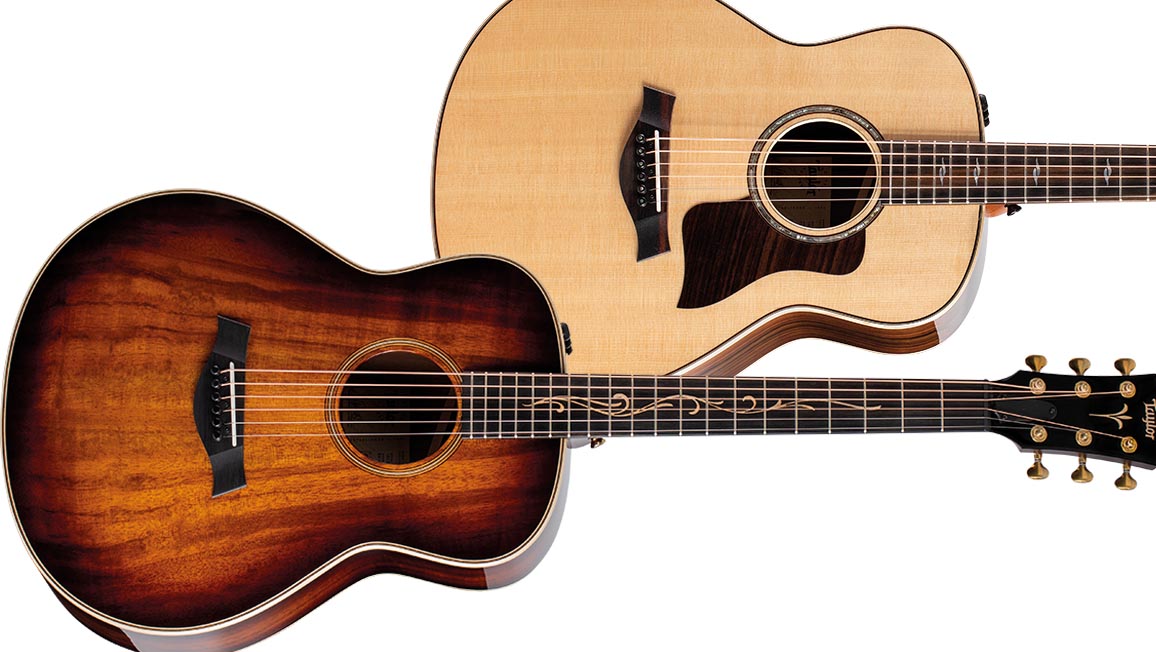GuitarPlayer Verdict
The Taylor GT 811e is a versatile workhorse suitable to practically any style or situation, and it delivers plenty of bang for the buck. The Hawaiian koa GT K21e costs a lot of kala, but I can’t imagine any fingerstylist or koa enthusiast who has the cash regretting the decision to spend it on this dream machine. Both deservedly earn our Editors’ Pick Award.
Pros
- +
Robust tone from compact, cozy body.
- +
Relaxed playability and casual feel.
- +
The K21E, meanwhile, is vibrant, dynamic, and articulate.
- +
Silky smooth nuanced playability on ergonomic body.
- +
Stunning exotic look.
Cons
- -
Larger players may find quarters a bit cramped.
You can trust Guitar Player.
Small is the big new thing at Taylor Guitars, which announced two Grand Theater models at NAMM’s Believe in Music Week, and dropped big news about transitioning ownership to its employees.
The novel C body falls in between a GS Mini and a full Grand Concert size, and the GT 811e and GT K21e join the line-founding GTe Urban Ash, which earned an Editors’ Pick in December. Its new siblings offer premium woods, including the hallmark rosewood-and-spruce combination of the flagship 800 Series, while the GT K21e is pure solid koa from the island of aloha like its cousins in the Koa Series.
All GTs feature Taylor’s new C-Class bracing system, designed to deliver bodacious tones from petite bodies. Being a rather petite dude, I was stoked to put these little lovelies through a few paces. GTs come in a featherweight AeroCase, which this player prefers to a hard case for a compact fiddle.
Taking the instruments out revealed two distinctly different aesthetics. The 811e appears familiar and classy, with a single abalone rosette and Element inlays. The K21e, on the other hand, is stunning and exotic. A shaded edge burst radiates like a jewel in sunshine to highlight the rich koa wood grain, while Spring Vine inlays and antique gold tuners add elegance.
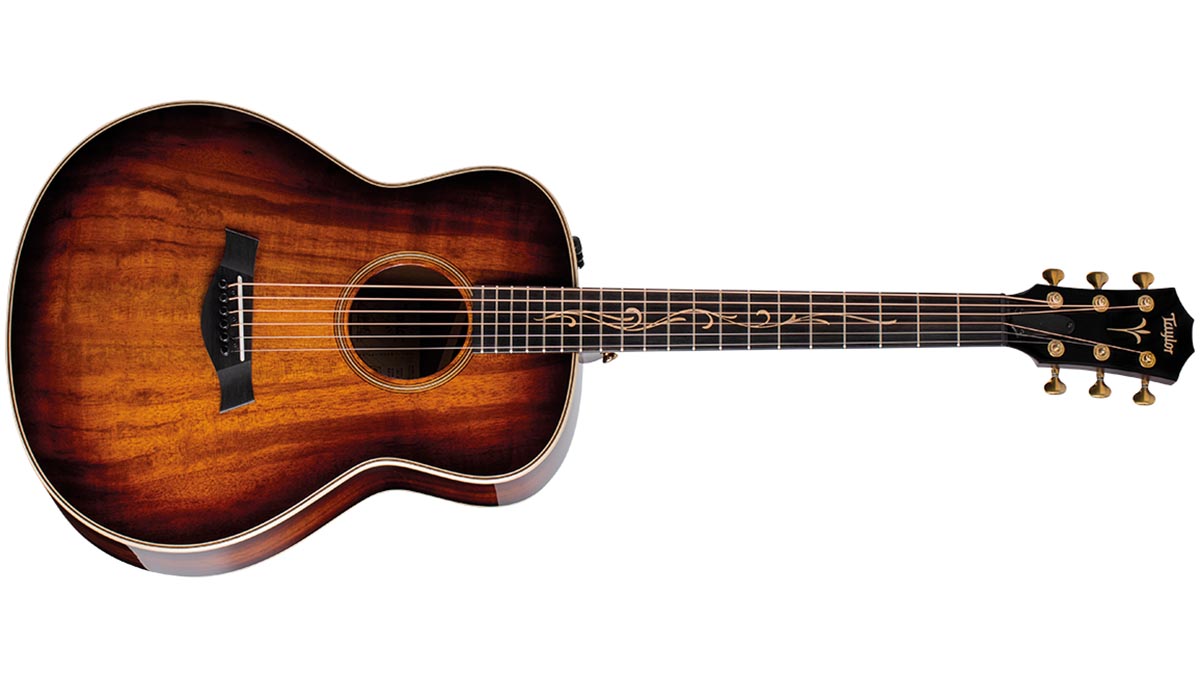
I was a little hesitant to lay hands on the striking beauty, especially considering there is no pickguard, but as lead designer Andy Powers explains, “The material of this full-body gloss finish, while very thin, is actually more durable and scratch resistant than most pickguard materials, especially when applied over a tougher wood like koa.”
The overall feel of the two is quite similar, with the koa model being smoother, silkier, and slinkier. The immediate gratification factor is off the charts.
The first thing you notice is a lack of tension compared to a full-scale instrument, as if the strings were slightly slacked, a gauge lighter, or even nylon. By coupling a short scale length (24 1/8 inches) with a short body length (18 1/2 inches), Powers conjured a uniquely chill vibe, which naturally relaxes the approach in both hands.
I usually go for the snappy feel and pronounced sound of a full scale, but I appreciate the change of pace on these GTs.
Due to the altered angle of the rhythm-hand dangle on the compact body, I found myself playing more fingerstyle, with a light touch going a long way
The fretboard action feels a heck of a lot like an electric. With less distance between the frets and a unique, slightly more narrow than standard nut width (1 23/32 inches), it made challenging chords and licks easier to play.
String bending is such a cinch that one winds up using more vibrato. That’s especially true on the K21e, which offers an ocean of nuance in every note. Due to the altered angle of the rhythm-hand dangle on the compact body, I found myself playing more fingerstyle, with a light touch going a long way.
The standing “hang” is spot on. It was a blast walking down the street serenading the cats with a guitar that feels less like a beast of burden and more like a natural body extension.
The volume is of course a bit softer than that of a full-size guitar, which my wife noticed right away because it was easier for her to sing over, but she also enjoyed the full tone, saying, “It sounds just like one of the bigger guitars, only quieter.”
I compared the GT 811e directly to an 814e Grand Symphony (same wood combination), and while the latter certainly sounded bigger, less boxy, and more spread out, there wasn’t a bunch more bass. Powers attributes that in part to GT’s C-Class bracing. Before any eyes roll about another new “magic” bracing, understand that this is simply a modified version of V-Class bracing.
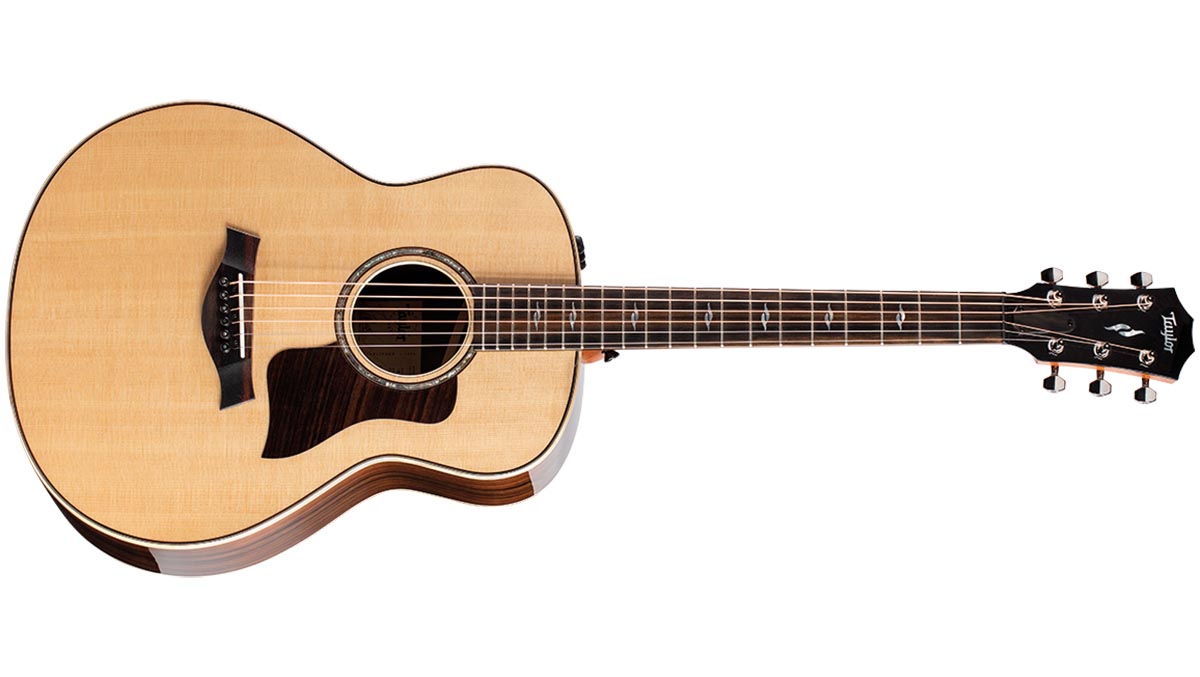
Powers explains: “C-Class is an asymmetrical variant of V-Class bracing designed specifically to bring out the bass. The C stands for cantilevered. Think of a diving board: It’s anchored at the steps and at the fulcrum point, but from there on out is free to fluctuate.
"The main brace in the GT uses a similar principle; it’s less supported at one end. The extra flexibility helps mitigate the inherent quality of a smaller guitar having a higher resonant frequency. A smaller sound hole helps bring out the bass as well.
“Finally, building a shorter body with modern curves means it doesn’t look or function like a parlor guitar. Notice that unlike the Grand Concert [Taylor’s smallest 'full' size], the Grand Theater doesn’t have the narrow, elongated look of a parlor guitar at all.
"This is going the opposite direction. It’s actually based on a scaled-down version of our largest guitar, the Grand Orchestra, with proportions maximizing the amount of interior air volume, kind of like a baby grand piano.”
Getting a full-figured sound from a petite box is a big part of the GT story, but the takeaway is ultimately about sonic integrity, not bass or volume. Each of these two models sounds holistic, and the K21e is truly special. It has Lincoln-like integrity, practically plays itself, and is resonant, with fabulous sustain.
I normally prefer the wooly warmth of rosewood, but it sounded slightly stuffy in the low mids compared to this crystal clear koa. The K21e is simply one of the most pleasing production guitars to pass though my hands in any size, and somehow sounded preferable to my experiences with larger all-koa instruments.
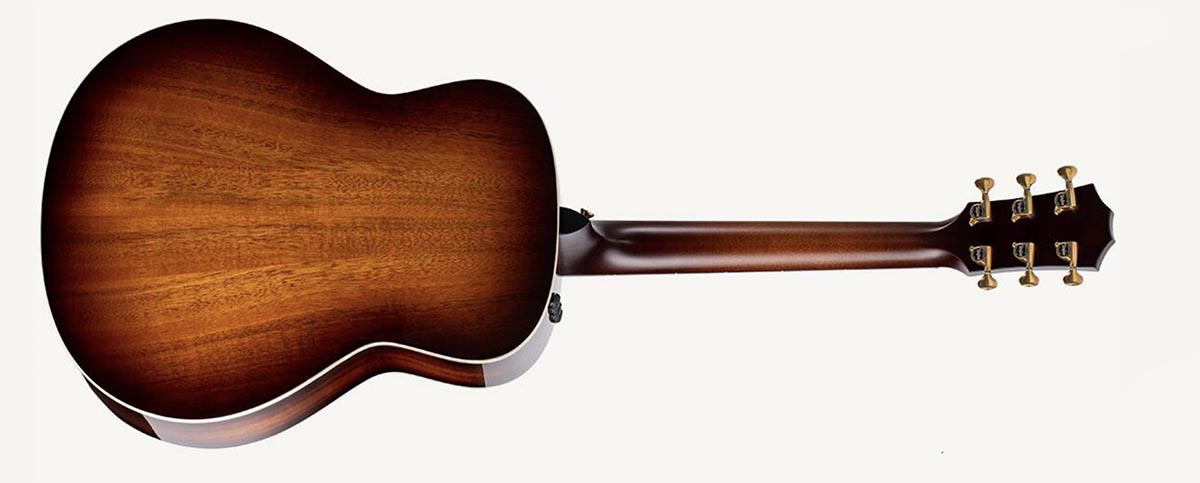
“Having less string tension allows for more of the body sound to shine through,” Powers says. “Koa is a hard wood. A solid koa top will always have a natural compression effect that trims off the initial attack like a limiter. But the K21’s unique build re-sets the whole mix and allows the koa body’s best characteristics to come through.
"It’s surprisingly responsive, and the sweet, colorful tone is strong, articulate, and lively. Koa’s natural clarity helps mitigate the boxy quality inherent in small guitars.”
The K21’s unique build re-sets the whole mix and allows the koa body’s best characteristics to come through. It’s surprisingly responsive, and the sweet, colorful tone is strong, articulate, and lively
Andy Powers
Both new GTs offer a ton of cool qualities in a small package that not only travels well but also is truly stageworthy. Taylor ES2 electronics faithfully translated their distinct personalities through a Fender Acoustic Junior Go and an AER Tommy Emmanuel signature. At a rehearsal in a spacious room, the 811e compared favorably to a Taylor 514ce Grand Auditorium.
Little folks will surely appreciate Taylor’s diminutive Grand Theater. Viking-sized players might find the quarters a bit cramped or feel a bit self conscious about wearing one well onstage, but it’s easier for anyone to handle around home, and studio applications abound for all. Players with repetitive stress injuries should certainly audition a GT because it requires so little torque to make it sing.
Creating an exceptional guitar on a small platform presents a huge challenge and requires only slightly smaller amounts of materials than a large one, so we can’t expect it to cost much less.
The Taylor GT 811e is a versatile workhorse suitable to practically any style or situation, and it delivers plenty of bang for the buck. The Hawaiian koa GT K21e costs a lot of kala, but I can’t imagine any fingerstylist or koa enthusiast who has the cash regretting the decision to spend it on this dream machine. Both deservedly earn our Editors’ Pick Award.
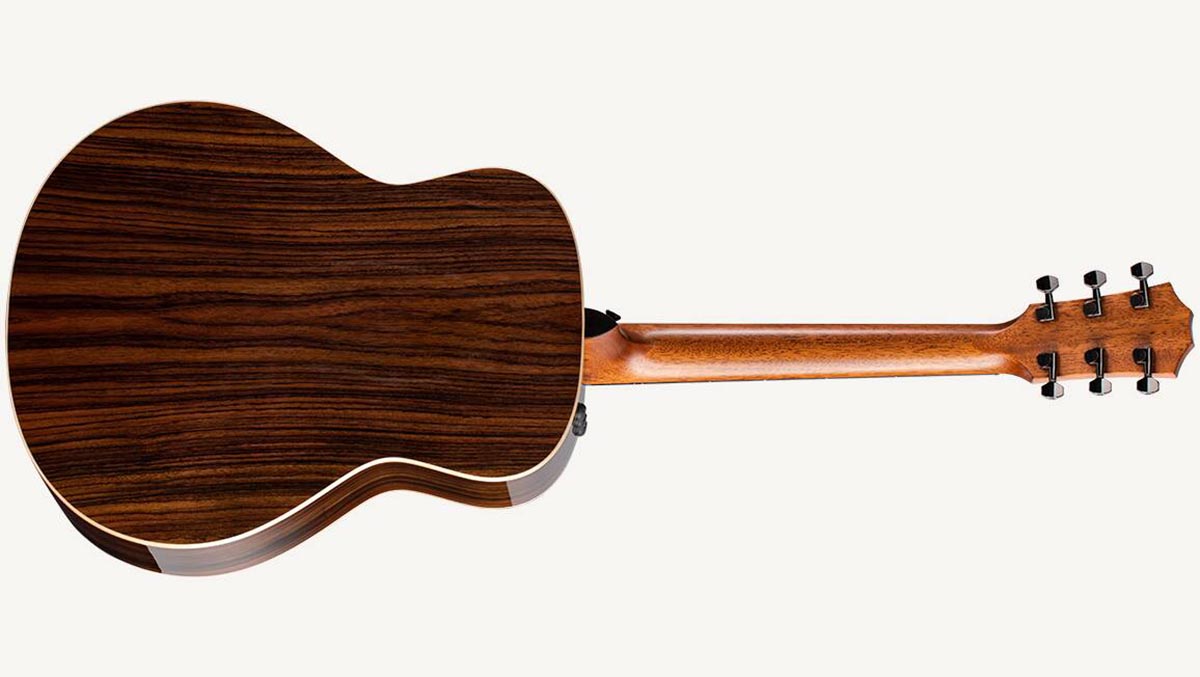
Specifications
- GT K21E
- PRICE: $4,699 street, AeroCase included
- NUT WIDTH: 1 23/32” (1.72)”, Tusq
- NECK: Mahogany
- FRETBOARD: West African ebony, 24 1/8” scale, Spring Vine inlay
- FRETS: 20
- TUNERS: Gotoh mini 510 antique gold
- BODY: Solid Hawaiian koa back, sides, and top with C-Class bracing
- BRIDGE: West African ebony with Micarta saddle
- ELECTRONICS: Taylor ES2 with volume, bass, and treble controls
- FACTORY STRINGS: Elixir .012–.053
- WEIGHT: 4 lbs (as tested)
- BUILT: USA
- GT 811E
- PRICE: $2,999 street, AeroCase included
- NUT WIDTH: 1 23/32” (1.72)”, Tusq
- NECK: Tropical mahogany
- FRETBOARD: West African ebony, 24 1/8” scale, Element inlays
- FRETS: 20
- TUNERS: Taylor nickel mini
- BODY: Solid Indian roseweood back and sides, solid Sitka Spruce top with C-Class bracing
- BRIDGE: African ebony with Micarta saddle
- ELECTRONICS: Taylor ES2 with volume, bass, and treble controls
- FACTORY STRINGS: Elixir .012–.053
- WEIGHT: 4 lbs (as tested)
- BUILT: USA
- CONTACT: Taylor
Jimmy Leslie has been Frets editor since 2016. See many Guitar Player- and Frets-related videos on his YouTube channel, and learn about his acoustic/electric rock group at spirithustler.com.
“I felt myself starting to cry.” Eric Clapton’s 'MTV Unplugged' Martin acoustic returns in two guises. But Slowhand’s affinity for the guitar brand began long before that seminal live performance
"I have a Mercury on the guitar now, which makes me very happy.” Brian May’s new signature Gibson SJ-200 features a subtle tribute to the late Queen singer Freddie Mercury
